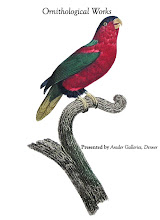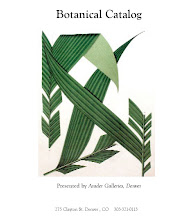 I always love seeing fern prints in a home, there is something so fresh and striking about them that lends them to both a more contemporary and traditional decor. We have a lovely set of Thomas Moore ferns here in the gallery ( see an example of two below) that would be a wonderful addition to any botanical collection.
I always love seeing fern prints in a home, there is something so fresh and striking about them that lends them to both a more contemporary and traditional decor. We have a lovely set of Thomas Moore ferns here in the gallery ( see an example of two below) that would be a wonderful addition to any botanical collection.


Thomas Moore
Pressed nature-prints from Ferns of Great Britain and Ireland
27” x 20” framed. London, 1855.
In these magnificent pressed nature-prints, Thomas Moore has created the finest examples of nature-printing available. The 51 plates were produced by Henry Bradbury for Moore‘s book The Ferns of Great Britain and Ireland, published in London, 1855. Nature printing is a straightforward technique discovered in the fifteenth century, which involves using the plant specimen itself in the creation of an image. At its simplest, a plant is covered with ink and then pressed flat against a piece of paper, leaving an image or impression on the paper. This rather crude method was advanced and perfected during the nineteenth century by the Imperial Printing Office in Vienna. At its most refined, the technique involves passing the plant, under pressure, between two metal plates, one made of soft lead and the other of hard steel. This technique can be achieved by most artists, although the expense of the technique meant that it has never been widely adopted, and examples such as these ferns by Moore are rare.
Thomas Moore (1821-87) was a gardener and writer on horticulture, who became curator of the Chelsea Physic Garden in 1848 and lived there until his death; he wrote and published extensively on ferns. The garden, renamed the Chelsea Physic Garden in 1875, increased the number of fern species cultivated there by fifty percent under his tenure. The Thomas Moore Fernery was built on the site of his original garden in 1907, and today contains a display of varieties of ferns described and cultivated by Moore and popular during the Victorian era. His patron and friend was the great botanist and horticulturalist John Lindley (1799-1865), who became the first Professor of Botany at the University of London, and was also the editor on Moore’s book. The third party involved in the publishing of The Ferns of Great Britain and Ireland was Henry Bradbury, who was a specialist and became acquainted with the nature-printing process at the Imperial Printing Office in Vienna. This new technique of nature printing was originally invented by Aloes Auer and Andreas Warring in 1852 and was thus improved by Bradbury and he patented his own version in London.
So well-received was Moore’s book that it heralded a craze for ferns during the nineteenth century, perhaps because of the exquisite delicacy of the images. Victorian’s, particularly the British, were fascinated by ferns, planting them in gardens and utilizing the fern form as a popular decorative arts motif. Collections of fern prints such as this one were extremely popular with both scientists and others who were simply entranced with the graceful and decorative forms. The fern craze, dubbed “pteridomania” by Charles Kingsley in 1855, raged between 1850 and 1890. It was fed, in part, by the excitement of discovery – even though ferns were plentiful throughout the damp woodlands of Britain, they had an exotic aura, having been little studied before 1840, and needing careful tending in order to be cultivated in urban settings. Fern motifs decorated nearly every type of utilitarian object from including china, furniture, wrought iron, textiles and even gravestones. Their cultivation, especially indoors in Wardian Cases and conservatories, led to a proliferation of books on ferns and their culture. We invite you to stop in and see these rare and exquisite prints!




No comments:
Post a Comment